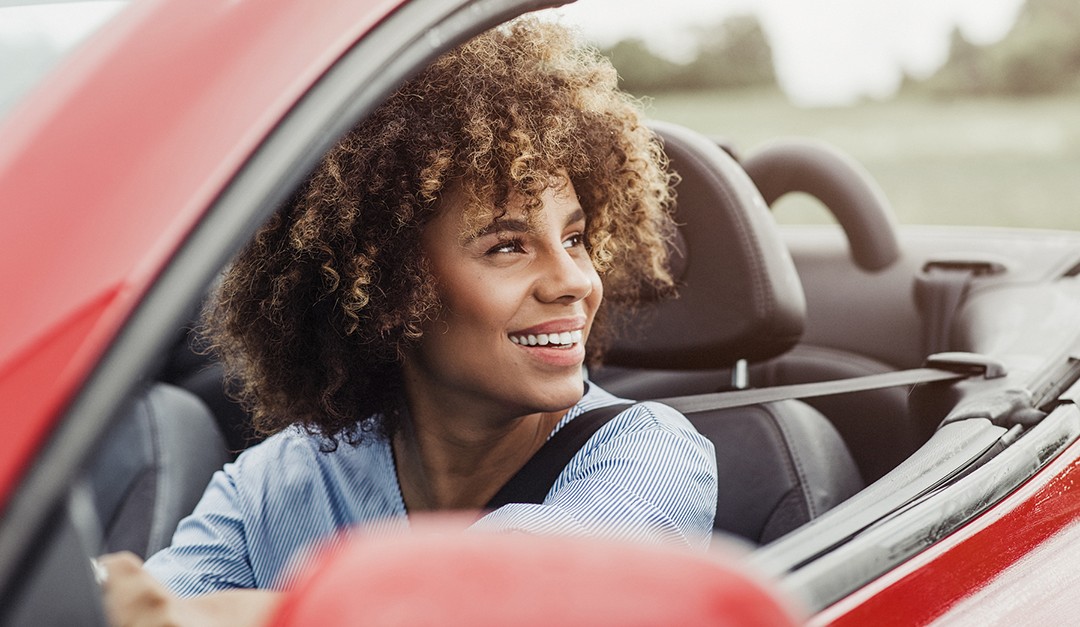(TNS)—Hitting the road on your own can be an incredibly liberating experience. With no fights over the radio dial, you can sing loudly and shamelessly to your “Britney’s Back” playlist. You call all the shots and all the stops—even if you want to stop at that Bigfoot-themed roadside coffee stand. With these safety tips, you can ensure your trip doesn’t go from inspirational Oprah Winfrey Network movie to horrifying “60 Minutes” episode.
1. Share your location.
Sure, part of the fun of a solo road trip is being untethered, but emergencies happen, so tell someone where you’re going. You can download a locator app such as Find My Friends or Life260 to share your location with a buddy. Of course, phone batteries die, dead zones exist, and occasionally you accidentally drop your phone into the stingray petting pool at the roadside aquarium you decided to visit. So plan a tentative route before you go, with details about where you plan to be and when, and leave a copy with a friend or family member. Speaking of which…
2. Have a plan.
I know, I know. It’s the “open road,” not the “make a plan road.” Having a plan doesn’t mean you can’t still make an unplanned stop at a shop advertising the world’s largest pizza. When you’re making a plan, the two most important factors are when and where you can get gas, and when and where you’ll be sleeping. Apps and online tools can help. On Furkot, you can map out your trip and even get suggestions for places to stop and sleep, eat or get gas. The iExit app finds your location on the highway and lets you know where the upcoming amenities are.
Some good, old-fashioned preplanning can come in handy if you don’t want your trip to eat up all your phone data (or in case your GPS bites the dust). Use Google Maps to plot out your general route, take a moment to look into the major towns along the way (bigger cities and towns will be more likely to have gas stations and places to stay), and make a note of any stretches through national parks, nature areas or rural areas where it might be more difficult to find services. Before you drive through these places, make sure to get gas and consider how long it will take to get through them.
3. Invest in screens.
In case you underestimate how tired you are or the gas station coffee lets you down and you need to pull over for rest, be prepared to pick a designated rest stop, and consider investing in some window coverings. They make it easier to nap without being seen as you drool onto the steering wheel, and keep curious strangers from knowing you’re in there alone. Windshield sunshades will also keep you cool on hotter days. For side windows, try pull-down screens. Using screens is also a good precaution to take if you’re leaving your car and have any valuables that can’t be stowed in the trunk.
4. Don’t lose power.
Get a car charger, make sure it works with your phone and cigarette lighter or USB charge port, plug it in, and stash it in the glove box when you’re not using it. You never know when you’ll find your device flashing that ominous empty battery symbol when you’ve taken a wrong turn at Nowheresville, gotten a flat tire, or are being stalked by angry raccoons. The charger should just live in your car.
5. Know thy car.
You don’t have to be a professional mechanic, but knowing how to patch things up until you can get to one is important. If you’re taking your own car, you probably already know most of its quirks—the passenger-side window only rolls down halfway; it’s a snob that chokes on literally anything other than premium gas—but you’ll also want to know how to change or temporarily fix a flat tire, and where and how to refill the oil, coolant or transmission fluid. Even more importantly, just take good care of your four-wheeled bestie so you don’t find yourself stranded 100 miles from a mechanic because of a perfectly avoidable situation. A pre-trip tune-up isn’t a bad idea. (Borrowing a friend’s car or driving a rental? Take a moment to learn where everything is before you even leave the dealership or garage.)
6. When in doubt, pack it.
Movies make it look easy and romantic to jump in your car and go, but if you’re going alone, bring a well-stocked roadside kit with jumper cables, a flashlight and extra batteries and a gas can. You’ll also want basic tools such as a tire iron, car jack, screwdriver, pliers, adjustable wrench and a pocket knife. Extra bottles of coolant, oil and transmission fluid are also a good idea. Less obvious additions: kitty litter (you can put it under the tires if you get stuck in snow) and duct tape (because, of course). Be sure to bring a first-aid kit and other personal safety items, such as a Mylar blanket, extra layers (for cold weather), and nonperishable snacks and water. It’s hard to overpack for a solo road trip, and it’s better to be safe than to curse yourself in the middle of a dark rural back road for forgetting those extra batteries—so when in doubt, pack it.
©2018 The Seattle Times
Visit The Seattle Times at www.seattletimes.com
Distributed by Tribune Content Agency, LLC
For the latest real estate news and trends, bookmark RISMedia.com.




